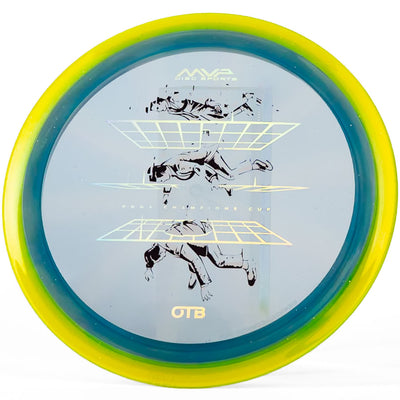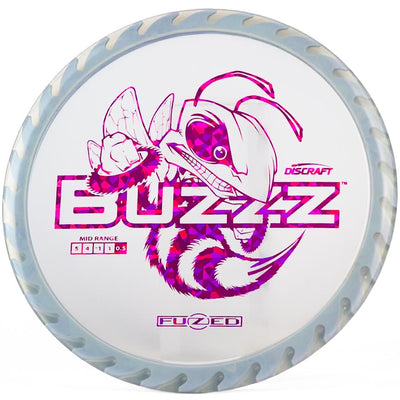Review: Discraft Comet vs. Meteor vs. Sol

The Comet, Meteor, and Sol: they're all Discraft discs, they're all excellent on anhyzer lines, and they all get a very straight flight.
Their astrological names make you think they'll hang in the sky and glide forever. So there can't be a galaxy of difference between the Comet, Meteor and Sol, right? Well, yes and no. Let's get into it.
Discraft Comet vs. Meteor vs. Sol
The bottom line:
- The Comet is a unique and versatile midrange disc with rich history of carving up a wide variety of fairways, but it's unique hand feel can be an acquired taste
- The Meteor is a speedy hyzer flip machine with an exceptionally high glide rating; it will more glide and fly further than the average midrange disc
- The Sol is a beginner-friendly putter/mid range hybrid that could be a favorite disc for slower arms and niche utility disc for experienced players
Read on for our in-depth comparison of these discs, and make sure to check out our in stock disc golf discs when you are done!
Dimensions
A quick glance at the Discraft flight chart shows these three molds clumped together in the understable mid range spot. To dig a bit deeper, let's take a look at the official PDGA approved dimensions of these molds.
Discraft Comet Dimensions

- Diameter: 21.8 cm
- Height: 2.1 cm
- Rim depth: 1.3 cm
- Rim width: 1.2 cm
The Comet's wide diameter and high dome allows for more air to circulate under the disc. This gives it tremendous glide potential at slower speeds.
When thrown with a clean release, the Comet achieves a distinctive "hover" effect that resembles that of a traditional catch frisbee. Put on a flat line, it flies straight for days.
But there's a flip side to that coin. If you don't reliably get a clean release, the Comet could be a challenge to master. If you're off by a few degrees of angle, that straight shot you envisioned could end up drifting to the right and gliding off the fairway.
Since it requires smooth and fundamentally sound technique to control, many players find it useful as a practice disc to learn smooth throwing form. Check out our Discraft Comet review to see how it flies:
Discraft Meteor Dimensions

- Diameter: 21.5 cm
- Height: 2.0 cm
- Rim depth: 1.3 cm
- Rim width: 1.2 cm
With its shorter diameter and lower profile, the Meteor is significantly faster than the Comet and holds the most raw distance potential of these three discs. It is considered the best mid for disc golfers who feel the need for speed.
Its overall sleeker design fits more naturally in the hand for many players. Such comfortable hand feel is vital to confidently shape straight shots and controlled turnovers.
Discraft Sol Dimensions

- Diameter: 21.1 cm
- Height: 1.7 cm
- Rim depth: 1.3 cm
- Rim width: 1.1 cm
With a very low profile, tight diameter and thin rim, the Sol is closer to a hybrid throwing putter than a traditional midrange workhorse, and should feel comfortable for players of smaller stature.
Those who are new to disc golf and aren't quite ready to wrap their hands around the Comet or Meteor will be able to get a firm and reliable grip on the beginner-friendly Sol.
Differences
The Comet, Meteor and Sol are all understable midrange discs, so where do they differ?
1. Hand Feel
Not only is it wide and domey, but the Comet also has a bead (an extra bit of plastic that protrudes from the bottom of the rim). This bead makes it a slightly more stable disc, with a tad less turn (-2 vs. -3 for Meteor and Sol).

While this opens up a wider variety of shot shapes, versatility doesn't matter if it feels uncomfortable in the hand, and for some the bead is a dealbreaker. The Sol and Meteor are both beadless. Combined with their lower profiles, they will be more comfortable options for the average disc golfer.
2. Potential Distance
Since its debut as in 2008, the Meteor has earned a reputation for being a great disc for popping hyzer flip shots right out of the box. When released on a slight hyzer angle, it quickly flips up to flat and cruises on a straight line.
With this extra speed and distance potential, the Meteor might end up replacing your fairway driver in certain situations, particularly in the woods. The Comet and Sol both fly at slower speeds, and will have a harder cap on their maximum distance.
3. Skill Level
As the -3 turn and 0 fade flight numbers indicate, it doesn't take much arm speed to get the Sol up to cruising velocity. A mere flick of the wrist is enough to send it gliding down the fairway, making it a great option for a new disc golf player.
Advanced players may find the Sol useful for awkward lies where shaky footing or heavy rough force an abbreviated reach back. But for their primary mid range, seasoned veterans will prefer the Comet or Meteor.
Similarities

For all their differences in physical size and shape, these three mid range discs share many similarities in their flight characteristics. For a frame of reference, here are the flight ratings (speed | glide | turn | fade):
Comet: 4 | 5 | -2 | 1
Meteor: 5 | 5 | -3 | 1
Sol: 4 | 5 | -3 | 0
Glide and Turn
All three discs have a great glide rating of 5, which is the maximum rating given to any mid range in the Discraft lineup (only 4 discs, all drivers, have a higher glide rating of 6).
They all have a negative turn rating, with the Meteor and Sol holding a very low -3 (only 2 discs, all drivers, have a higher turn rating of -4).
Combine these two extremes, and you get this simple disc golf equation: High glide + negative turn = very understable.
This means that these midrange discs will all flip up from hyzer release and glide straight. When thrown flat, they will deliver that touchy and elusive anhyzer fade. If you put them on a bit of anhyzer angle, they will all naturally perform turnovers better than other discs.
Fade
The flight rating indicates whether the disc will come out of those controlled turnovers with a gentle fade or just keep turning and drift off into oblivion.
The Comet, with its aforementioned beaded rim adding stability, is considered to have the most reliable fade of the bunch. The Sol is more likely to continue turning over for its full flight, while the Meteor is somewhere in between the two.
Speed
As reflected in the "dimensions" section above, the Meteor holds the most speed potential. This comes from its lower profile. Players of all skill levels will immediately note the Meteor is an amazing disc for easy velocity in the mid range slot.
Wind
As they are slow discs with rounded rims, none of these three cut through a head wind or cross wind. This group doesn't fight the wind, they want to ride on top of it to glory. Give them some height in a stiff tail wind and they will hang in the air and get great distance.
Overlap
It's unlikely any disc golfer would need to bag more than one of these molds. If you're serious about disc golf, you will need to balance the Comet, Meteor or Sol with a stable mid that delivers steady and reliable hyzer fade.
For all that these cosmic discs can accomplish, none are a great for spike hyzers, skinny flexes, or tight turns. Adding a midrange with a higher stability rating, like the Discraft Zone or Wasp, will balance out the bag.
Plastics
We all know discs become more understable as they they take a beating. Since all three of these discs leave the factory very understable already, it is vital to choose a durable plastic. Otherwise, what was once a straight disc will start turning over and cratering into the ground.
Across all brands, premium plastic is proven to be the most durable. For Discraft, this is the popular Z plastic. For a bit better grip without sacrificing too much durability, their ESP plastic is also a solid option.
The Comet has been produced in multitude of unique plastic blends since its debut way back in 1995. These days you don't have to look very hard to find a Z Comet. It is the favorite mid of pro Michael Johansen, as he put his name on a special edition. Check out his ode to the Comet in this video:
The Meteor is one of Discraft's more popular discs, and can be found in a most plastic blends. If the Z plastic is a bit too slick, the ESP Meteor will provide slightly better grip while preserving good durability. Bigger arms might crave the CryZtal Meteor for a bit more stability and durability.
The Sol is the baby of the bunch, having debuted in 2018. As such, it is not available in as many plastic varieties, but it is easy to find in Z plastic.
Which One's For You?
If you want a versatile mid range and don't mind a beaded rim, check out the Comet.
If you want a fast mid range that gets a bit more distance, check out the Meteor.
If you want a beginner friendly disc that fits is any hand and delivers steady results, check out the Sol.
You can check out all of our mid ranges for sale here.












